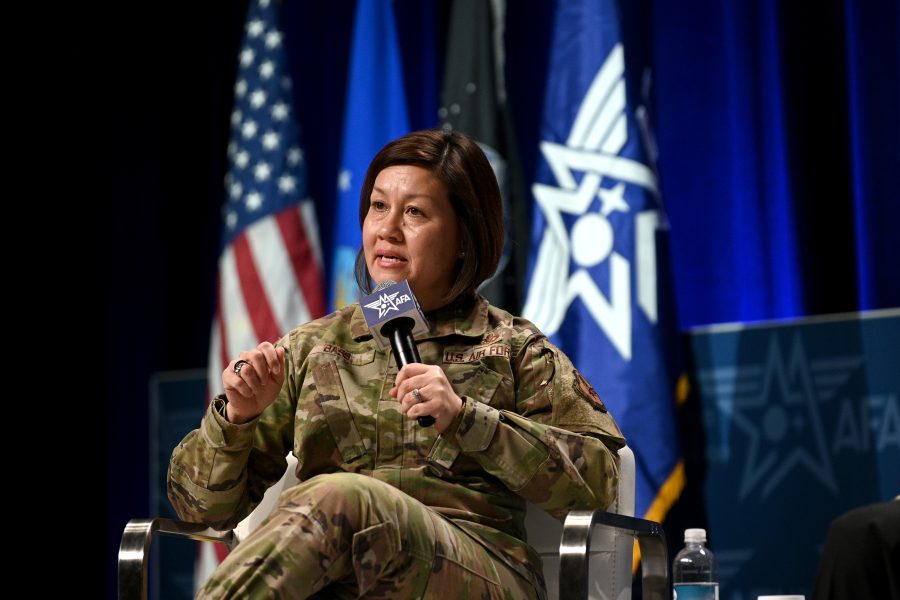AURORA, Colo.—The top enlisted leaders of the Air Force and Space Force reiterated calls for a broader reform of the military pay tables which lay out compensation for service members. While basic pay increases each calendar year, the charts that help guide those bumps are in need of an update, the senior leaders agreed.
“We haven’t had a targeted pay raise to our pay chart since 2007,” Chief Master Sergeant of the Air Force JoAnne Bass said Feb. 14 at the AFA Warfare Symposium. “We have the most educated, talented enlisted force in history. It is about time for a targeted pay raise.”
Bass’ counterpart, Chief Master Sergeant of the Space Force John Bentivegna, held a similar view.
“When you’re looking at the pay and compensation model and you do the analysis, the measuring stick we’re using … has to be reevaluated based on where we are today,” he said.
The senior enlisted advisors (SEAs) made their remarks in a panel discussion on the enlisted force about two weeks after they testified before a House Armed Services Committee hearing on quality of life for service members, where their counterparts across the military joined in the call for pay reform.
“I think all the SEAs are pretty much right in lockstep about pay and compensation,” Bentivegna said Feb. 14. “The talent that we’re recruiting today on the enlisted side across all the services far exceeds what we’ve seen in history. But beyond that, what we’re asking them to do far exceeds anything we’ve asked them to do before.”
Targeted pay raises focus on pay increases for personnel in specific ranks. Experts say a pay raise focused on junior enlisted troops would help them keep pace with the economy.
“Cost of living has been rising steadily in recent years, and many troops are finding it increasingly difficult to afford housing, food, and other basic necessities,” wrote the Military Officers Association of America in June.
Pay and compensation has been a key issue for Bass heading into her last few weeks as CMSAF. In a Jan. 4 discussion with the Air & Space Forces Association, she said the military pay chart “really hasn’t evolved since 1949.”
Her comments came about halfway through the two-year 14th Quadrennial Review of Military Compensation, where the Department of Defense checks to make sure service members’ pay, benefits, and allowances are keeping up with socioeconomic changes.
“Today’s military family looks different than it did 30 years ago,” Bass said. “You have more dual-working parents, more dual-military parents, more single parents.”
Simultaneously, more civilian organizations offer benefits and better wages, which prompts the services to compete for talent. One key military benefit is basic allowance for housing (BAH), which Bentivegna said is in serious need of a refresh. As housing costs surged in recent years, annual BAH increases and the standards used to set BAH at each pay grade have struggled to keep up.
“Ninety-nine percent of you would not be compensated for a single family home,” he said Feb. 14. “Is that model that we’re looking at just a little outdated?”
Bass acknowledged that service is “by and large a calling” and that military members are for the most part well-compensated, but “we’ve got to figure out a different, more modern model, because civilian organizations are offering great compensation packages where 10 years ago they weren’t.”
Both Bass and Bentivegna said they were encouraged by the enthusiasm that members of Congress showed for helping better compensate service members, but the prospect of a continuing resolution casts a shadow on the prospect of future changes.
“We’re making great strides, but we talked about the need for stability in our funding,” Bentivegna said. “There are things we want to get after, but when we can’t execute what we plan for, then we fall behind.”
